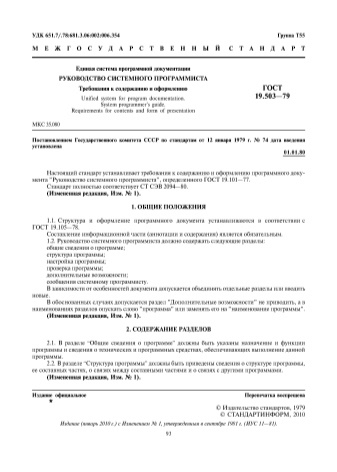System programmer: characteristics, skills and responsibilities

The world owes the emergence of the profession of a system programmer (IT administrator, sysadmin) to Charles Babbage and Ada Lovelace - the creators of the analytical engine. A programming language is named after Ada. In the middle of the 20th century, Konrad Zuse assembled the first computer and wrote programs suitable for it. Let's see what skills a modern systems programmer should have, as well as what are his immediate responsibilities and professional standards.

Features of the profession
A systems programmer develops various components of a computer system. It builds a multi-level structure that unites separate elements - the work of the processor, network equipment, RAM into a single whole. This is in fact an engineering activity, but with a creative bias. The development of application programs is not within the competence of a system programmer; it creates the basis for their smooth operation.
The indisputable advantages of this profession are:
- high demand in the labor market;
- ample opportunities;
- the opportunity to gain knowledge in applied informatics.
There are practically no downsides, except for the fact that it is a sedentary and routine work. Since the profession is appreciated by employers, it means that it brings a good income. This is confirmed by the salary data for November 2019. In Russia, the salary ranges from 50,000 to 190,000 rubles per month, and in Moscow the cost of a good specialist's services varies from 45,000 to 200,000 rubles.

Skills and knowledge
It is imperative to know and be able to apply the principles of building different types of system software, to adapt ready-made programs to a specific system.You need to work quickly with Open Source software. Knowledge of physics, mathematics, English, as well as Assembler and C ++ will be useful.
In addition, you need such knowledge.
- Theories of algorithms and ways of writing formal languages.
- The basics of computer graphics, features of the architectural construction of modern computers, reflecting the management of work.
- Ability to write query languages and data manipulation.
- Methods for describing programming languages, syntax, semantics.
- Principles of operation of operating systems.
- Copyright and Related Rights Law.
- Laws, regulations in the field of circulation, production and use of information technology.
- Labor law.
- Occupational health and safety rules.
Those wishing to study this specialty are desirable to have the ability to think logically, draw conclusions, perseverance, high concentration of attention and the ability to organize work.

Responsibilities
The programmer is faced with a number of common challenges.
- Development of new programs.
- Testing the created program.
- If during the first launch, defects were found, the specialist works on the errors.
- Presentation of the work performed to the director.
- Implementation of software in the activities of the organization.
- Correction of the initial data.
- Creation of user manual.
- Registration of all necessary documents - a patent for property and copyright.
- Monitoring the normal operation of the program, eliminating failures.
- Creation of an electronic version of databases.
- Information security - installation of antiviruses, passwords.
- Helping employees, solving emerging issues.
- Optimization of the internal and global network.
- Restricting the ability of the company's personnel to enter entertainment sites during business hours.

The system programmer's manual refers to the operational and technical documentation, which describes:
- information for verification;
- ensuring the functioning and configuration of the program.
A complete list of works is set out in the "System Programmer's Guide", developed and executed in accordance with GOST 19.503-79 and accompanying GOST 19. 101-77 ("Types of program documents") and GOST 19. 105-78 ("General requirements for program documents") ...
The manual is divided into the following sections.
- General information about the program.
- Structure - constituent parts and components, their connection.
- Setting - lists all the necessary actions in specific cases.
- Check - methods that establish the performance of the program.
- Additional features.
- Specialist Messages - text messages issued during product setup.
- Applications - pictures, graphs, tables.


The guide points are:
- scope and objectives of the software;
- rules for installing components;
- principles of action;
- system requirements;
- instructions for setting up software;
- frequency and method of performance monitoring;
- software maintenance procedure;
- ways of solving auxiliary problems;
- work in case of force majeure;
- methods of interaction of installed programs with their copies.
A responsibility
The systems programmer is responsible if:
- refused or poorly performed their duties;
- violations committed during work were found;
- the enterprise suffered losses through his fault.









